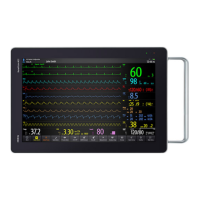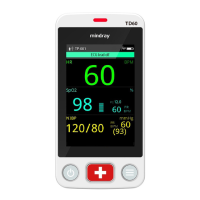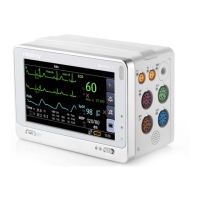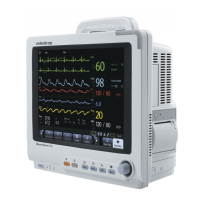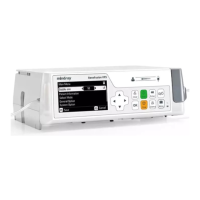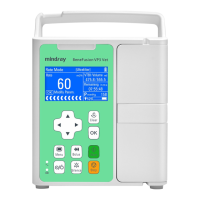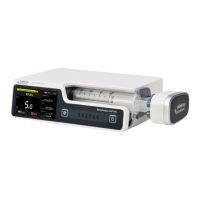BeneVision N1 Patient Monitor Operator’s Manual 9 - 3
9.4.2 Placing the Electrodes
Impedance respiration is acquired using standard ECG electrodes and cables. Either lead I (RA-LA) or lead II (RA-
LL) can be used.
For more information, see
7.4.4ECG Electrode Placements.
• Correct electrode placement can help to reduce interference from cardiac related impedance
changes: avoid including the liver area and the ventricles of the heart between the respiratory
electrodes. This is particularly important for neonates.
• Some patients with restricted movements breathe mainly abdominally. In these cases, you may
need to place the left leg electrode on the left abdomen at the point of maximum abdominal
expansion to optimize the respiratory waveform.
• Some patients (especially neonates) expand their chests laterally, causing a negative intrathoracic
pressure. In these cases, it is better to place the two respiration electrodes in the right midaxillary
and the left lateral chest areas at the patient’s maximum point of the breathing movement to
optimize the impedance respiration waveform.
• To optimize the impedance respiration waveform, place the RA and LA electrodes horizontally when
monitoring respiration with ECG Lead I; place the RA and LL electrodes diagonally when monitoring
respiration with ECG Lead II.
• Periodically inspect electrode application sites to ensure skin integrity. If the skin quality changes,
replace the electrodes or change the application site.
• Store the electrodes at room temperature. Open the electrode package immediately prior to use.
• Check that the electrode packages are intact and that the electrodes are not past the expiration
date. Ensure the electrode gel is moist.
(1) Lead I (2) Lead II

